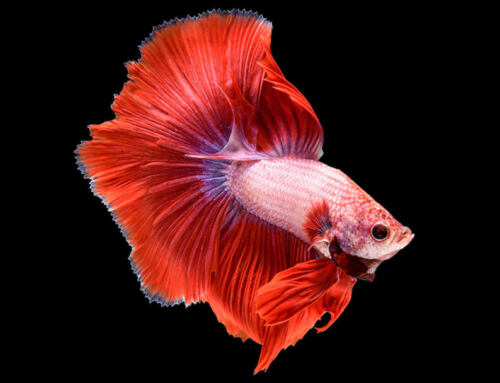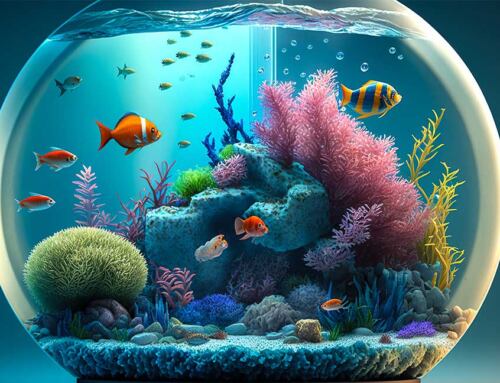The majority of people view fish as endearing, quiet creatures that add calmness and tranquillity to any aquarium. The parasite Camallanus, which is common in fish species, presents a covert threat to health. If ignored, these tiny parasites have the potential to severely harm tropical fish, causing wasting and eventual death.
The camallanus nematode worm, which can infect various fish species, is one of the most common internal parasites for aquarium fish. They appear like red threads sticking out of the fish’s anus. Camallanus is usually found in necropsies of cichlids who have showed symptoms like bloat, white feces, and not feeding. So it imitates Hexamita. A hollow stomach, an arched back, wasting food spewing out, and bulging intestines can also be caused by capillaries.
For any fish keeper hoping to safeguard their priceless aquarium animals, knowledge of these parasites’ life cycles and how to spot an infection are crucial. The transmission of the Camallanus parasite and how to spot a possible infestation are topics covered in this article. To understand more about Camallanus fish worms, keep reading.
Worms In Fish Tank- What Are Camallanus Worms?
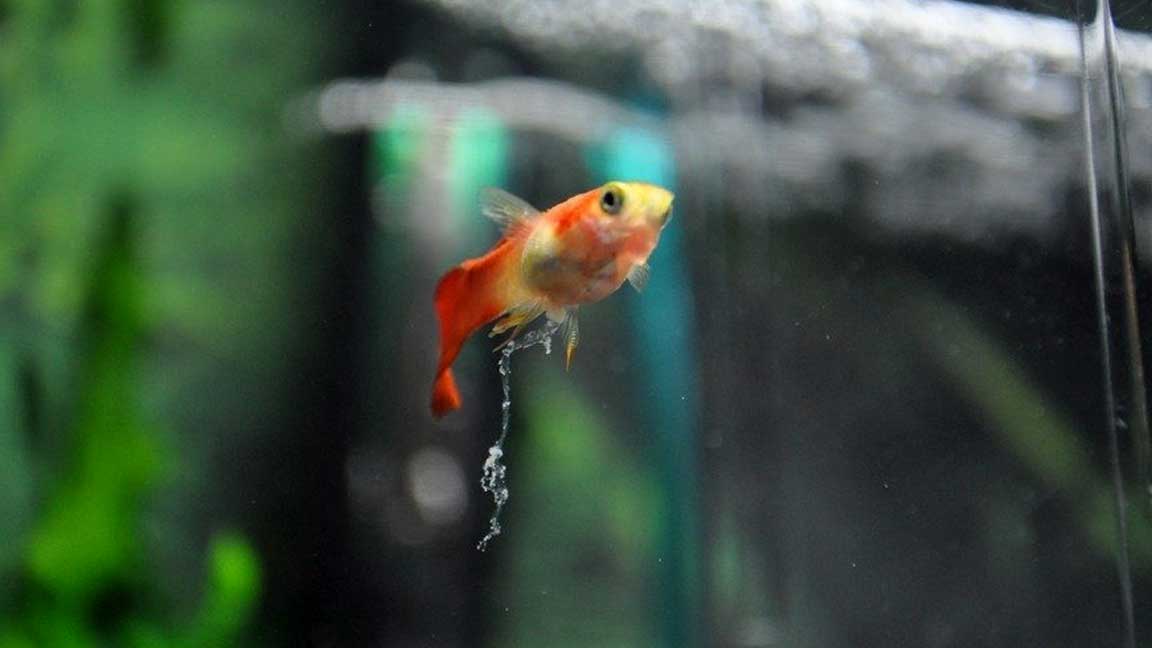
We are aware of the dangers and illnesses that could damage our cherished finned companions since we own fish. While some parasites may merely make your fish uncomfortable, others are parasites that will truly kill it and send it to its watery grave. The camallanus worm is one of these parasites; it is a microscopic parasite that, if untreated, can cause major problems.
These are the worm that looks like a strand of hair. Camallanus worms live in the digestive tract of fish. They get their sustenance from the fish’s blood. They do this by drilling into the fish and attaching a feeding organ to it. Red worms hanging from the fish’s anus indicate a severe and widespread sickness.
This worm can enter an aquarium tank more easily because it may be difficult to see. And if they have infected your fish, getting rid of them could be difficult. There are treatments for the parasite, but you must do your study and may even require the help of a seasoned aquarist to get rid of the infection in your aquarium.
What Causes Camallanus Red Worms In Fish Tank?
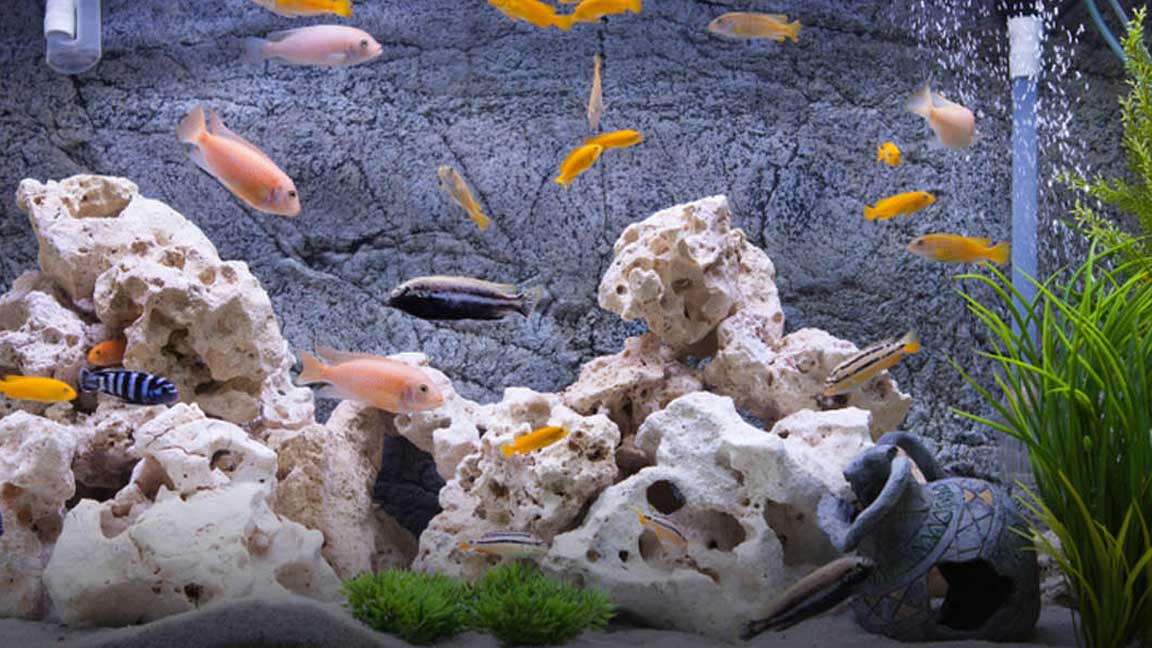
Infected fish excrete worm larvae in their waste, which are eaten by tiny crustaceans like cyclops when they are added to your aquarium. When a healthy fish eats the infected crustaceans, the fish becomes contaminated, and the larvae grow into adults that can reproduce inside the fish, continuing the cycle. Some species of camallanus worms do not require an intermediary host, so fish can get camallanus worms directly by nibbling on fish excrement that contains larvae. Cross-contamination can result from adding plants, gravel, or equipment from an infected tank to a healthy tank, which spreads the parasite as well. In either scenario, the disease is only slightly contagious.
Symptoms Of Worms In Fish Tank
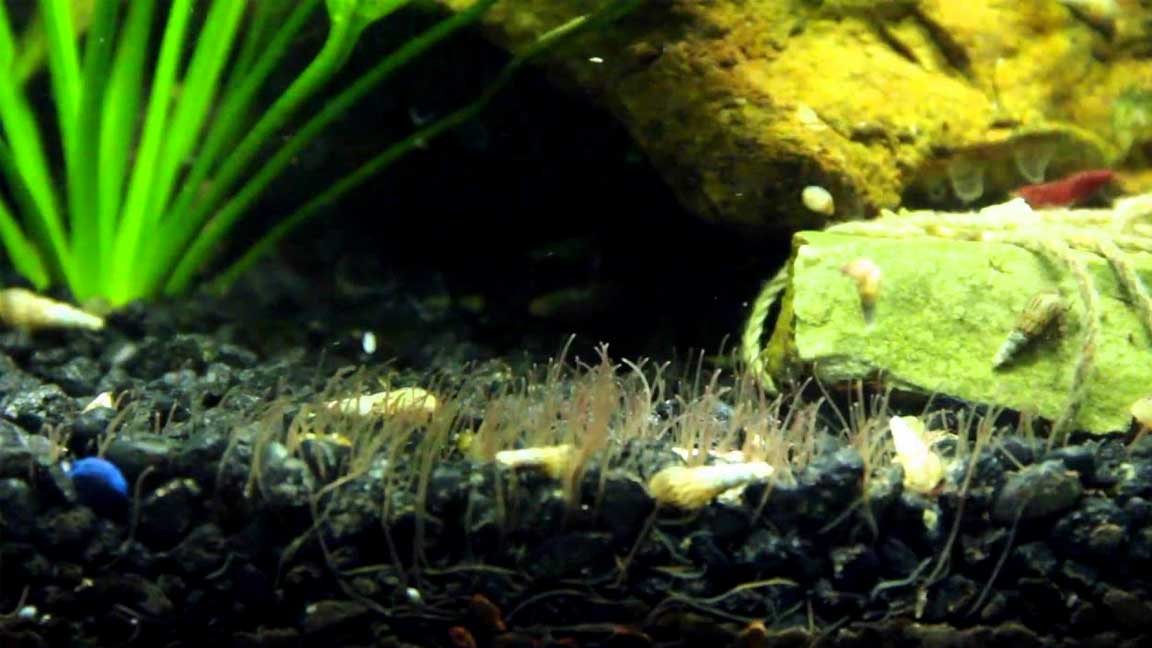
Here we have a list of some symptoms that help you to find out the infected fish:
- Long, thick white poop (mucus from irritation in the intestinal lining).
- Inflamed/swollen vent region.
- Loss of weight.
- bad color,
- small abdominal bloating
- decreased appetite.
You already have a nasty, advanced infection on your hands by the time you notice the actual red worms hanging from the fish. In addition, the internal damage caused by these worms to the fish can result in internal bleeding and subsequent bacterial infection. Because of this, it’s crucial to treat your fish and to do it quickly. Additionally, it is a wise idea to treat baby fish with a prophylactic medication, especially for species like the following:
- Guppy
- Bettas
- Discus
- Cichlids
- Angelfish
Can Camallanus Kill your Fish?
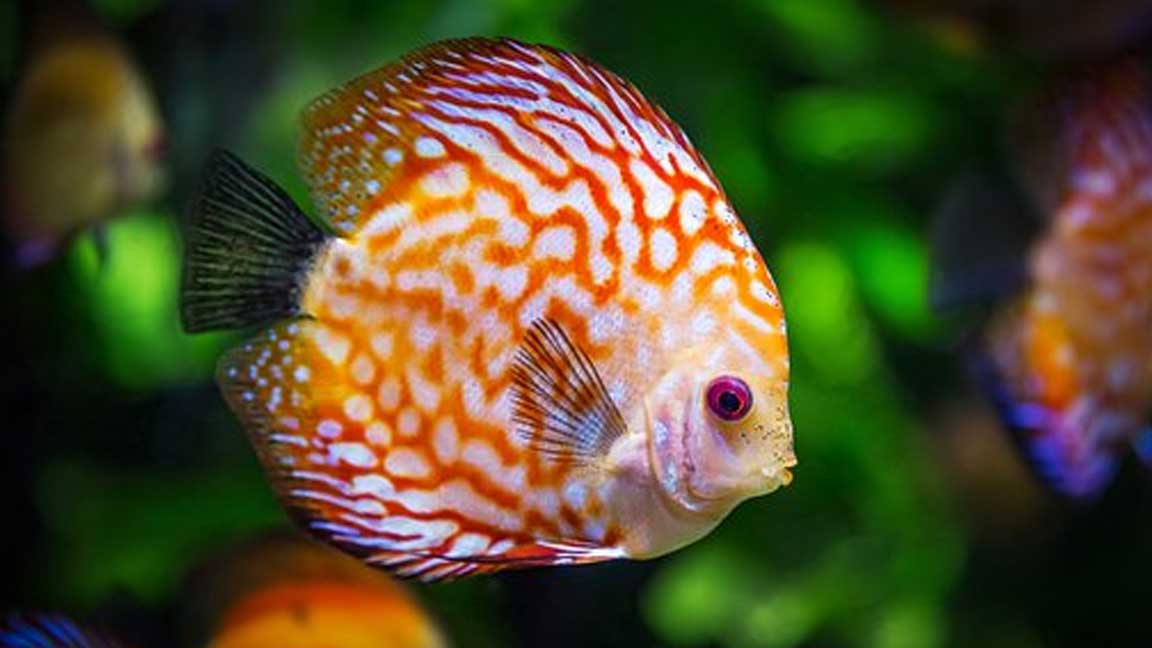
Fish can be killed by camallanus worms in heavy infestations. It can result in a string of deaths that frequently have no apparent explanation. Weakness, bloating, and a lack of appetite are typical signs of infestation. Be wary of someone who appears famished. Livebearers have been known to tremble, shake, and sometimes appear to be swimming. If your fish are generally active but you notice them staying in one spot for a time, they can have worm infestations.
Fish kept in steady settings may not exhibit these signs. But inadequate nutrition, overcrowding, and poor water quality will exacerbate the infestation. These elements will make the host fish’s immune system less robust and exacerbate the infection.
Camallanus Worms Treatment- How To Get rid of Worms In Fish Tanks?
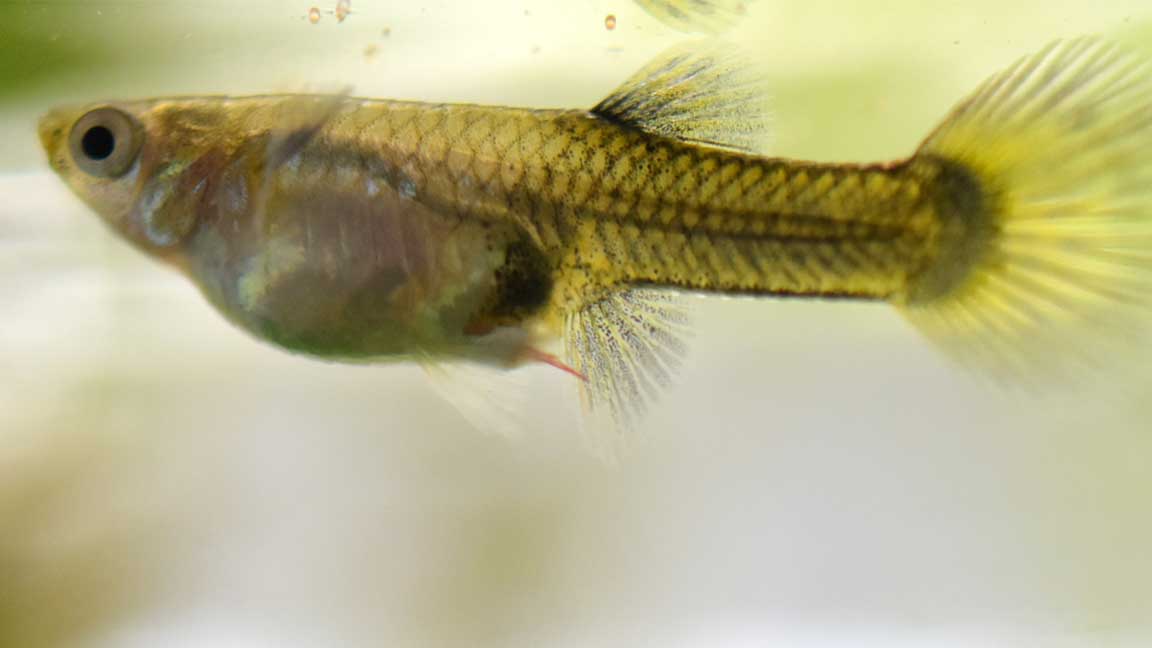
In your fish tank, you don’t want camallanus worms since they will kill your fish. But if you’ve seen camallanus worm symptoms in your fish tank and are wondering how to get rid of them, there’s good news. Here are a few ways to get camallanus worms out of your fish tank.
Provide a Medicated Food
You can create a medication to stop the camallanus worms from migrating around within your fish if they are still consuming food. 2 frozen bloodworm cubes, 1/8 tsp of Panacur C Canine Dewormer (Fenbendazole), some Seachem Garlicguard for flavor, and some Seachem Focus Freshwater to hold the food and medication together are all that is needed to produce this. Before you feed it, at least one hour should have passed.
Water Should Be Changed Every Day
Even if it’s true that prevention is superior to treatment, stopping camallanus from generating new larvae will help you progressively lessen the problem of an infestation. To do this, you must regularly change the water and vacuum the gravel. It’s necessary to get rid of the fish excrement.
Water Purification Using Levamisole
Because Levamisole Hydrochloride works so well, aquarists enjoy using it to treat aquarium water. After combining the medication with 1.5 milliliters of 7.5% Levacide (levamisole hydrochloride) per 7.5 liters of water, pour one liter of water over the top of the tank. After 24 hours, completely replenish the water and vacuum the gravel to get rid of any larvae that may have been hiding there.
Use a UV disinfectant
To eliminate bacteria and parasites from the water, a UV sterilizer is employed. It functions by exposing the water to ultraviolet rays from a light bulb, which kills any living things in the water. It can therefore be quite effective in destroying Camallanus larvae.
Use hydrogen peroxide to treat
For the treatment of camallanus worms in fish tanks, use hydrogen peroxide. Remove the activated carbon and turn off the aeration to prepare the tank for the treatment. Add 3 cc of hydrogen peroxide to every 10 liters of water after that, and let it sit for 24 hours. Once all the worms have been eliminated, change 50% of the water and repeat the procedure.
Copper Sulfate Treatment
Copper sulfate is a different technique for getting rid of camallanus worms from fish tanks. For every gallon of water, you must measure out 2-4 ppm of copper sulfate, add it slowly to your tank, and then swirl it in. Change 50% of the water after letting the tank sit for 24 hours, then repeat the procedure until all camallanus worms have vanished.
Think about manual extraction.
Another technique for removal involves removing the camallanus worms by hand from your fish. Tweezers and gloves are required for this. Before carefully moving your fish into a different container that is filled with water from its original tank, you must first turn off the aquarium’s lights. Then, gently remove any visible worms from your fish’s body using the tweezers. After then, be sure to properly dispose of them!
Prevention
It is true that preventing problems is frequently easier than fixing them. So how can you stop your fish from contracting this disease? The only surefire method to deter new fish from invading your tank is to quarantine them. It is advisable to prophylactically treat young fish with garlic and Epsom salt in order to aid the fish in flushing out young parasites before they mature. If fish show signs of having worms hanging out of their bottoms, they should be treated.
Also, stay away from giving fish tubifex worms because they can spread various dangerous parasitic diseases that harm our fishy friends. Additionally, avoiding fish from poor sources is a good idea.
Conclusion
On summing up, That is 100% true; callamanus worms are unpleasant creatures. But if you take quick enough action, you might be able to get your fish’s health back. This should help you approach treatment in the right manner, I hope. Want to impart a piece of wisdom or experience? Please feel free to remark below.

